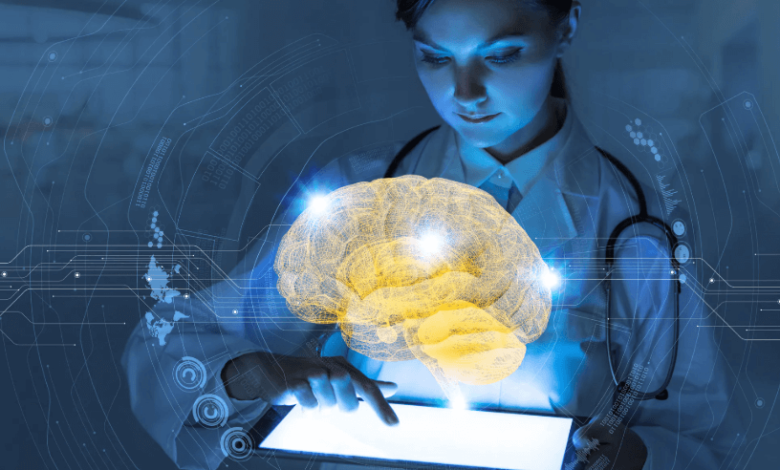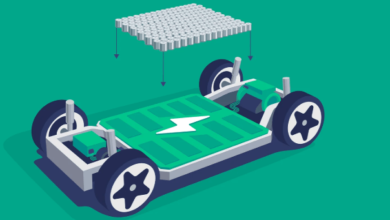The Rise of Generative AI in Creative Industries

Generative AI, a groundbreaking innovation in artificial intelligence, is revolutionizing the creative industries by automating processes, enhancing productivity, and unlocking new dimensions of creativity. From designing immersive visuals to composing music and crafting compelling narratives, this transformative technology is redefining the boundaries of human imagination and technical prowess.
What Is Generative AI?
Generative AI refers to a subset of artificial intelligence that uses algorithms and models, particularly deep learning techniques, to create new and original content. This includes text, images, audio, videos, and even 3D designs. Tools such as OpenAI’s GPT models, DALL·E, and MidJourney have demonstrated how these systems can produce human-like content by learning patterns and structures from large datasets.
How Generative AI Works
Generative AI models, such as Generative Adversarial Networks (GANs) and Variational Autoencoders (VAEs), rely on neural networks to learn from vast datasets. These systems are trained to generate outputs by mimicking the style, structure, and coherence of the training data. For example, in GANs, two neural networks—a generator and a discriminator—compete to improve content generation, resulting in increasingly realistic outputs over time.
Generative AI’s Impact on Creative Industries
1. Visual Arts and Design
Generative AI has become a game-changer for artists and designers by automating time-consuming processes. Tools like DALL·E and MidJourney allow creators to generate stunning artwork based on textual prompts, enabling experimentation with styles and concepts at unprecedented speed. Graphic designers can use AI to create logos, layouts, and even entire branding packages, reducing manual effort and enhancing efficiency.
2. Music Composition
AI-powered music generation platforms, such as AIVA and Amper Music, are redefining the music industry by assisting composers in creating soundtracks, jingles, and entire musical pieces. These tools analyze existing compositions and replicate styles, enabling musicians to experiment with genres and produce unique soundscapes with minimal resources.
3. Writing and Storytelling
In publishing and entertainment, generative AI is reshaping storytelling. Language models like GPT-4 can generate scripts, novels, and articles by interpreting prompts and adhering to stylistic guidelines. This technology empowers writers by providing inspiration, refining drafts, and offering new perspectives on creative narratives.
4. Film and Animation
Generative AI is revolutionizing filmmaking by enabling automated video editing, realistic animation, and virtual character creation. Studios are using AI to enhance post-production processes, generate lifelike CGI characters, and even conceptualize new movie scenes through virtual simulations.
5. Gaming
In the gaming industry, generative AI is pushing the envelope of immersive experiences. It helps create procedurally generated content, including terrains, character designs, and narratives, ensuring unique experiences for players. Developers are using AI to create adaptive storylines and intelligent non-playable characters (NPCs), adding depth and complexity to games.
Benefits of Generative AI in Creative Industries
1. Enhanced Creativity
Generative AI acts as a creative collaborator, offering fresh ideas and perspectives that push traditional boundaries. Artists and designers can experiment with innovative concepts that might be difficult to envision otherwise.
2. Cost and Time Efficiency
By automating repetitive tasks and streamlining workflows, generative AI significantly reduces the time and cost associated with creative production. This allows professionals to focus on strategic and high-value aspects of their work.
3. Democratization of Creativity
Generative AI tools make high-quality creative resources accessible to individuals and businesses, irrespective of their technical expertise or budget. This democratization fosters innovation and inclusivity across the creative spectrum.
4. Customization at Scale
Generative AI excels at producing personalized content, from tailored marketing campaigns to individualized learning materials. This ability to generate content at scale without sacrificing uniqueness has proven invaluable for businesses and educators alike.
Challenges and Ethical Considerations
1. Authenticity and Copyright
Generative AI’s capability to mimic styles and reproduce content raises questions about originality and intellectual property rights. Determining authorship and ensuring fair use remain significant challenges.
2. Job Displacement
While generative AI enhances creativity, its efficiency has sparked concerns about job displacement in creative roles, such as graphic design, content writing, and animation. Balancing automation with human oversight is crucial to addressing these fears.
3. Bias and Stereotypes
AI systems can unintentionally perpetuate biases present in training data, leading to content that reinforces stereotypes or excludes diverse perspectives. Developers must ensure inclusivity and fairness in AI-generated outputs.
4. Ethical Use of AI
The use of generative AI in creating deepfakes or misleading content has raised ethical concerns. Striking a balance between innovation and responsible application is essential for the technology’s long-term credibility.
Notable Examples of Generative AI in Action
1. Netflix’s Personalized Thumbnails
Netflix uses generative AI to create customized thumbnail images for viewers based on their preferences and viewing history, enhancing user engagement.
2. AI-Generated Album Covers
Musicians like Taryn Southern and Grimes have leveraged AI to design album covers and promotional materials, showcasing the seamless integration of AI into creative workflows.
3. Virtual Fashion Design
Brands like Gucci and Balenciaga are using generative AI to design virtual clothing collections for the metaverse, pushing the boundaries of fashion innovation.
4. AI in Advertising
Generative AI is increasingly being used to create hyper-personalized advertisements that resonate with target audiences, driving higher engagement and conversion rates.
The Future of Generative AI in Creative Industries
1. Collaborative AI Systems
The future of generative AI lies in tools that work alongside humans rather than replacing them. Collaborative AI systems will enable creators to refine AI-generated content and integrate it seamlessly into their workflows.
2. Hyper-Realistic Simulations
Generative AI will drive the development of hyper-realistic simulations for entertainment, education, and training purposes, creating immersive environments that rival real-world experiences.
3. Cross-Industry Applications
As generative AI continues to mature, its applications will expand beyond traditional creative industries into sectors like healthcare, architecture, and environmental science, fostering innovation across domains.
4. Ethical AI Development
Future advancements will prioritize ethical considerations, ensuring that generative AI adheres to principles of fairness, transparency, and inclusivity. Industry standards and regulations will play a critical role in guiding its responsible use.
How Creatives Can Embrace Generative AI
1. Stay Informed
Keep up with the latest advancements and trends in generative AI to understand its capabilities and limitations.
2. Experiment and Learn
Leverage tools like MidJourney or GPT to explore how AI can complement your creative process.
3. Focus on Uniquely Human Skills
Emphasize creativity, critical thinking, and emotional intelligence—qualities that distinguish human contributions from AI-generated content.
4. Collaborate with AI
View AI as a partner rather than a competitor. Use it to enhance your workflow and push the boundaries of your creativity.
Conclusion
The rise of generative AI in creative industries is a testament to the transformative power of technology. By augmenting human creativity, automating complex processes, and enabling unprecedented innovation, generative AI is reshaping how art, design, and content are produced. While challenges like ethics and bias remain, the potential of generative AI to empower creators and democratize access to creativity is undeniable. As this technology continues to evolve, it will not only redefine the creative industries but also inspire a new era of imagination and possibility.




